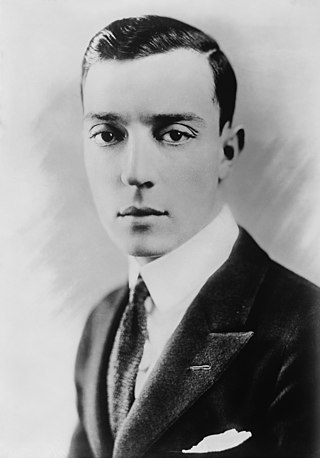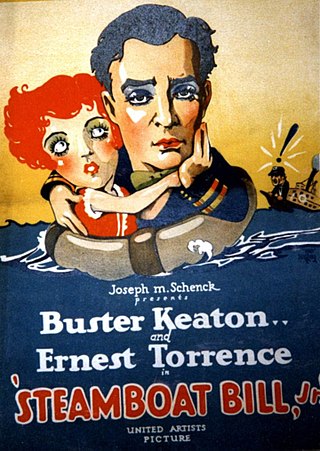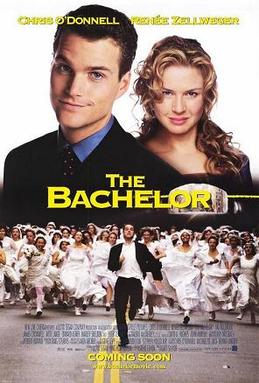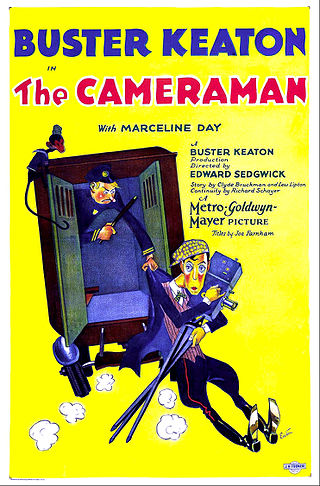
Joseph Frank "Buster" Keaton was an American actor, comedian and film director. He is best known for his silent films during the 1920s, in which he performed physical comedy and inventive stunts. He frequently maintained a stoic, deadpan facial expression that became his trademark and earned him the nickname "The Great Stone Face".

The General is a 1926 American silent slapstick Western action comedy film released by United Artists. It was inspired by the Great Locomotive Chase, a true story of an event that occurred during the American Civil War. The story was adapted from the 1889 memoir The Great Locomotive Chase by William Pittenger. The film stars Buster Keaton, who also co-directed it along with Clyde Bruckman.

Sherlock Jr. is a 1924 American silent comedy film starring and directed by Buster Keaton and written by Clyde Bruckman, Jean Havez, and Joseph A. Mitchell. It features Kathryn McGuire, Joe Keaton, and Ward Crane.

Roscoe Conkling "Fatty" Arbuckle was an American silent film actor, director, and screenwriter. He started at the Selig Polyscope Company and eventually moved to Keystone Studios, where he worked with Mabel Normand and Harold Lloyd as well as with his nephew, Al St. John. He also mentored Charlie Chaplin, Monty Banks and Bob Hope, and brought vaudeville star Buster Keaton into the movie business. Arbuckle was one of the most popular silent stars of the 1910s and one of the highest-paid actors in Hollywood, signing a contract in 1920 with Paramount Pictures for $1,000,000 a year.

Edward Francis Cline was an American screenwriter, actor, writer and director best known for his work with comedians W.C. Fields and Buster Keaton. He was born in Kenosha, Wisconsin and died in Hollywood, California.

Steamboat Bill, Jr. is a 1928 silent comedy film starring Buster Keaton. Released by United Artists, the film is the final product of Keaton's independent production team and set of gag writers.

One Week is a 1920 American two-reel silent comedy film starring Buster Keaton, the first independent film production he released on his own. The film was written and directed by Keaton and Edward F. Cline, and runs for 19 minutes. Sybil Seely co-stars. The film contains a large number of innovative visual gags largely pertaining to either the house or to ladders.

Our Hospitality is a 1923 American silent comedy film directed by Buster Keaton and John G. Blystone. Starring Keaton, Joe Roberts, and Natalie Talmadge and distributed by Metro Pictures Corporation, it uses slapstick and situational comedy to tell the story of Willie McKay, caught in the middle of the infamous "Canfield–McKay" feud, an obvious satire of the real-life Hatfield–McCoy feud.

The Bachelor is a 1999 American romantic comedy-drama fantasy film directed by Gary Sinyor and written by Steve Cohen. It is a remake of the 1925 Buster Keaton silent comedy film Seven Chances and stars Chris O'Donnell and Renée Zellweger. The film received negative reviews from critics and grossed $36.9 million against its $21 million budget. This film also marks Mariah Carey's acting debut.

The Navigator is a 1924 American comedy film directed by and starring Buster Keaton. The film was written by Clyde Bruckman and co-directed by Donald Crisp. In 2018, the film was selected for preservation in the United States National Film Registry by the Library of Congress as being "culturally, historically, or aesthetically significant."

Joseph Henry Roberts was an American comic actor who appeared in 16 of Buster Keaton's 19 silent short films of the 1920s.

The Cameraman is a 1928 American silent romantic comedy film directed by Edward Sedgwick and an uncredited Buster Keaton.The picture stars Keaton and Marceline Day.

Out West is a 1918 American two-reel silent comedy film, a satire on contemporary Westerns, starring Roscoe 'Fatty' Arbuckle, Buster Keaton, and Al St. John. It was the first of Arbuckle's "Comique" films to be filmed on the West Coast, the previous five having been filmed in and around New York City. The idea for the story came from Natalie Talmadge, who was later to become Keaton's first wife.

The High Sign is a 1921 two-reel silent comedy film starring Buster Keaton, and written and directed by Keaton and Edward F. Cline. Its runtime is 21 minutes. Although One Week (1920) was Keaton's first independent film short released, The High Sign was the first one made. Disappointed with the result, Keaton shelved it and the film was not released until the following year. The title refers to the secret hand signal used by the film's underworld gang.

Good Night, Nurse! is a 1918 American two-reel silent comedy film written by, and directed by, and starring Roscoe "Fatty" Arbuckle and featuring Buster Keaton. The action centers in a sanitarium where Arbuckle's character is involuntarily brought to by his wife to be operated on by Keaton's character for alcoholism.

Battling Butler is a 1926 American comedy silent film directed by and starring Buster Keaton. It is based on the 1923 musical Battling Buttler. The film entered the public domain in 2022.

The Frozen North is a 1922 American short comedy film directed by and starring Buster Keaton. The film is a parody of early western films, especially those of William S. Hart. The film was written by Keaton and Edward F. Cline. The film runs for around 17 minutes. Sybil Seely and Bonnie Hill co-star in the film.
The International Buster Keaton Society Inc.— a.k.a. "The Damfinos"—is the official educational organization dedicated to comedy film producer-director-writer-actor-stuntman Buster Keaton.

Roi Cooper Megrue was an American playwright, producer, and director active on Broadway from 1914 to 1921.

Louis Anger was an American vaudeville performer and movie studio executive. During the early days of the American silent film industry, Anger was considered to be "the king of slapstick comedy producers," and was instrumental in developing the film careers of famed actors Fatty Arbuckle and Buster Keaton.




















